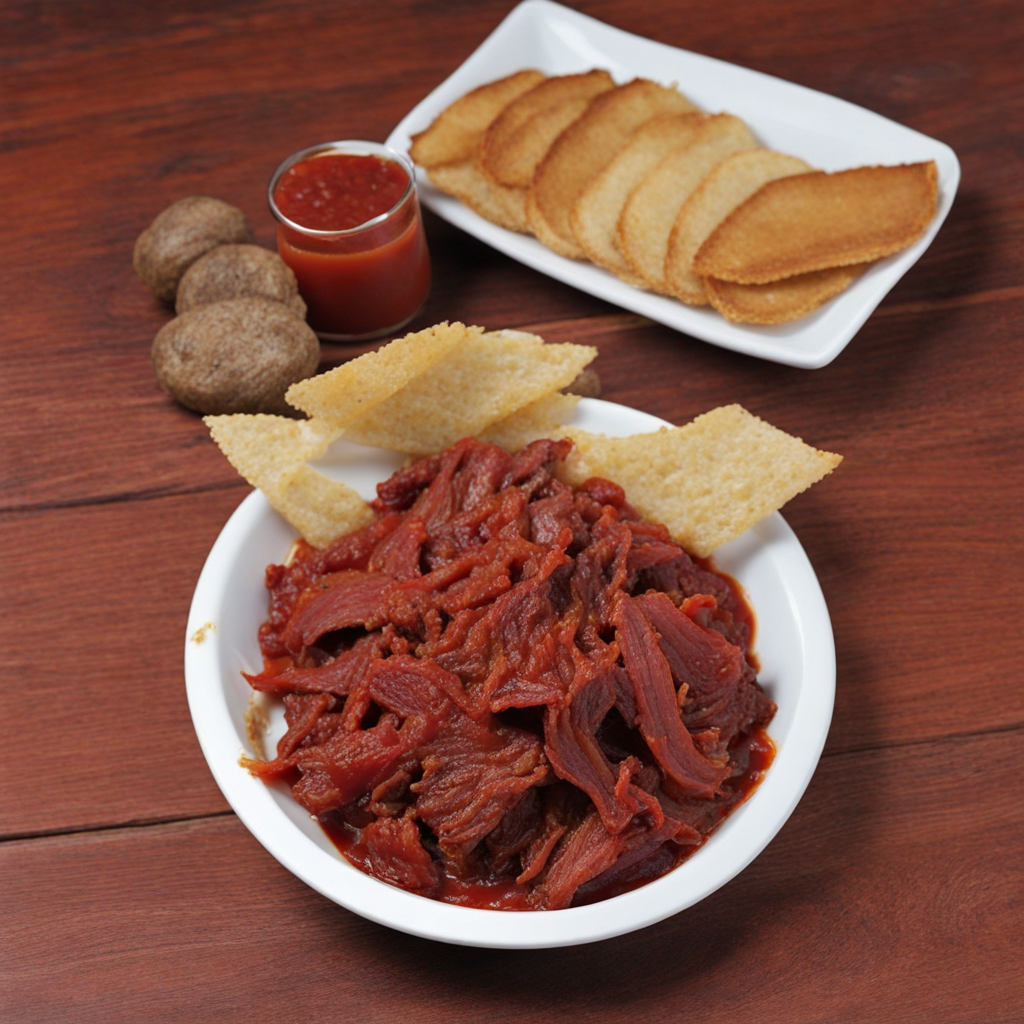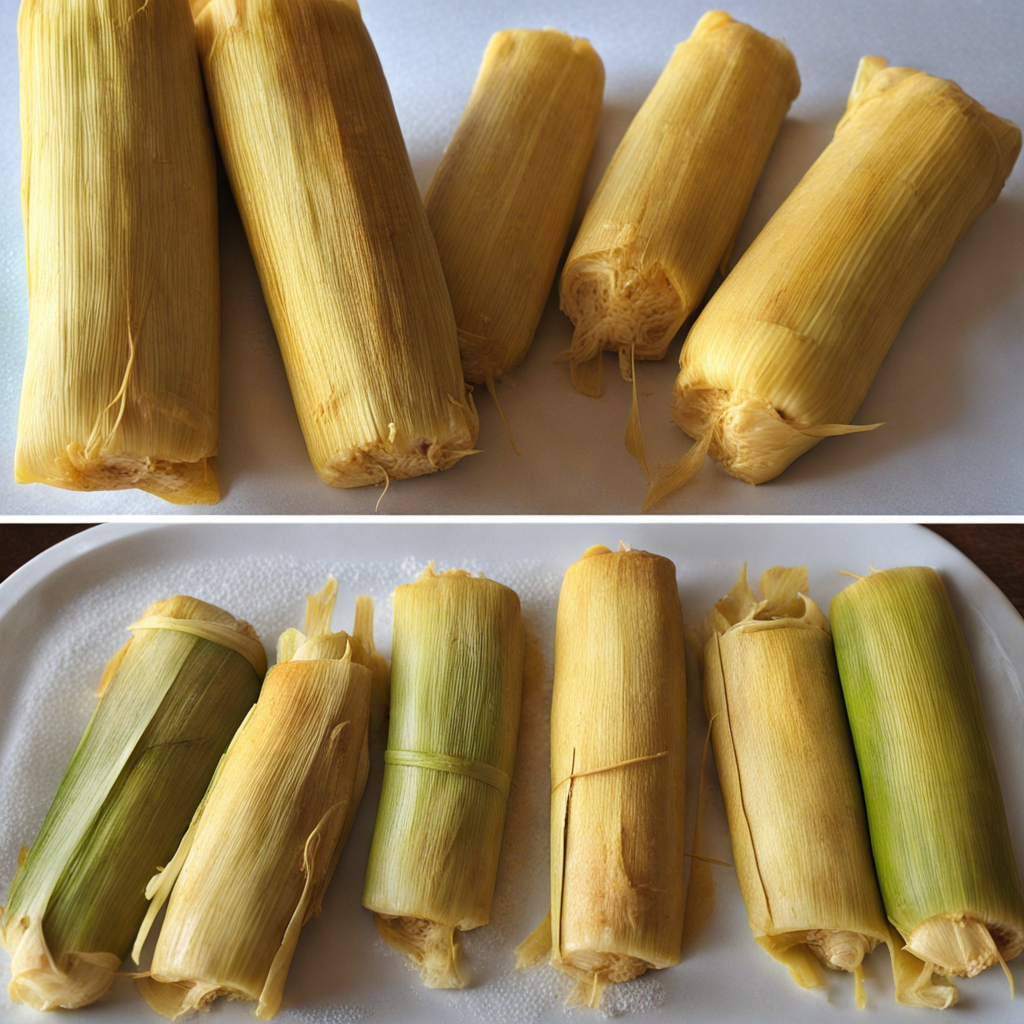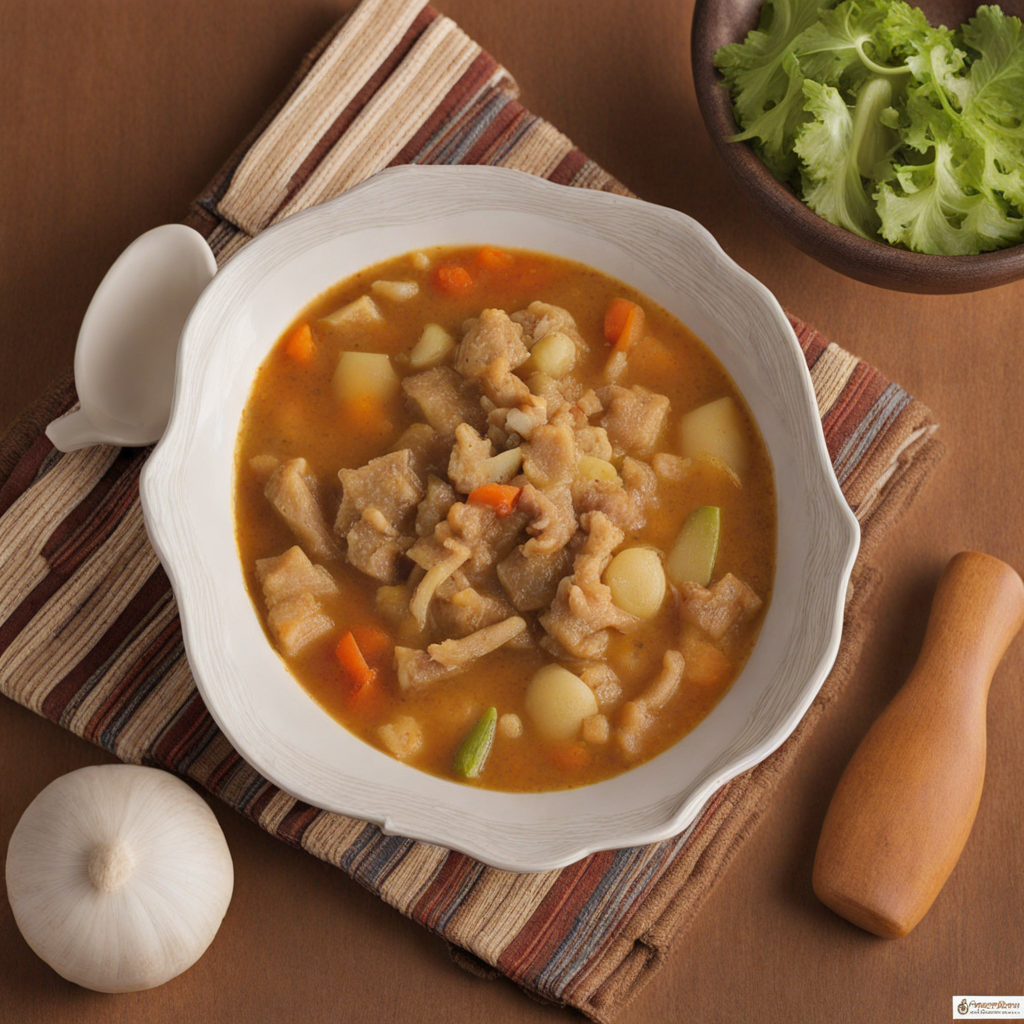Tasajo
Tasajo is a traditional Panamanian dish that features salted, sun-dried beef, showcasing the rich culinary heritage of the region. This method of preservation dates back to the indigenous peoples and has evolved over generations. The process involves marinating the beef in a blend of spices and salt before drying it under the sun, resulting in a robust flavor and a chewy texture that captivates the palate. Tasajo is often paired with a variety of sides, including rice, beans, or plantains, making it a versatile addition to any meal. When prepared, Tasajo can be grilled, stewed, or sautéed, allowing for different cooking techniques that enhance its savory profile. The dish is commonly enjoyed in rustic settings, often served with fresh avocado, lime, or a zesty salsa to balance the salty richness of the meat. Each bite offers a delightful contrast between the seasoned exterior and the tender interior, making it a must-try for those seeking a unique taste experience. In Panama, Tasajo is not just a meal; it is a cultural experience that brings people together around the table. It is often featured in celebrations and gatherings, symbolizing hospitality and the sharing of culinary traditions. As you explore Tasajo, you'll not only savor its distinctive flavors but also appreciate the stories and history woven into this beloved dish, making it an unforgettable addition to your culinary journey.
How It Became This Dish
The History of Tasajo: Panama's Culinary Heritage #### Origins of Tasajo Tasajo, a traditional Panamanian dish, embodies the rich cultural tapestry of the country, merging indigenous practices with colonial influences. The term "tasajo" generally refers to dried and salted beef, a method of preservation that dates back centuries. The origins of this dish can be traced to the indigenous peoples of Panama, who relied on various methods of food preservation, including drying, to ensure sustenance during lean seasons. As European colonization began in the 16th century, particularly with the arrival of the Spanish, new culinary techniques and ingredients were introduced. Salted meats became a staple for explorers and settlers, as these meats were easier to transport and had a longer shelf life compared to fresh meat. The combination of indigenous practices and European methods gave rise to tasajo, a dish that would later become a symbol of Panamanian gastronomy. #### Cultural Significance Tasajo is more than just a food; it is a representation of Panama's cultural identity. In a country known for its diverse population, which includes indigenous groups, Afro-Panamanians, and European descendants, tasajo serves as a culinary bridge that brings these communities together. The dish is often associated with communal gatherings and celebrations, symbolizing unity and shared heritage. In rural areas, tasajo is a staple in traditional meals, often served with rice and beans, which are considered the foundational elements of Panamanian cuisine. It is common to find tasajo featured in festive occasions such as family reunions, holidays, and local fairs. The preparation of tasajo also involves communal effort; families often come together to salt and dry the meat, fostering a sense of community and shared labor. #### Development Over Time As Panama evolved over the centuries, so too did the preparation and consumption of tasajo. The dish started primarily as a means of preservation, but with time, it became a culinary highlight in its own right. In the late 19th and early 20th centuries, as Panama underwent significant social and economic changes, the role of tasajo began to shift. With the construction of the Panama Canal and the influx of immigrants from various parts of the world, the local cuisine began to adapt and transform. Tasajo maintained its popularity, but new flavor profiles and cooking methods were integrated into its preparation. For example, Afro-Panamanian influences introduced spicy seasonings and cooking techniques, enhancing the way tasajo was enjoyed. In urban settings, tasajo became a common feature in local eateries, or "fondas," where it was served alongside rice, plantains, and various sauces. Street vendors began to offer tasajo in a variety of forms, such as in tacos or as a filling for empanadas, making it accessible to a broader audience. The dish's versatility allowed it to adapt to modern culinary trends, keeping it relevant in contemporary Panamanian cuisine. #### Tasajo in the Modern Era In the 21st century, tasajo continues to be an integral part of Panama's food culture. The dish has seen a revival in interest, not only as a traditional food but also as a source of pride for Panamanians. Gastronomic tourism has encouraged chefs and food enthusiasts to explore traditional recipes, leading to a renaissance of authentic Panamanian dishes, including tasajo. Food festivals celebrating Panamanian cuisine often feature tasajo as a centerpiece, showcasing its significance in the nation's culinary landscape. Local chefs experiment with tasajo, pairing it with modern ingredients and techniques, merging the old with the new. This evolution has helped tasajo to maintain its status as a beloved dish while appealing to younger generations. #### The Role of Tasajo Today Today, tasajo is not only a dish but a cultural artifact that tells the story of Panama's history. Its preparation remains rooted in tradition, with many families passing down recipes through generations. The process of curing and drying the beef, often done outdoors, is reminiscent of the practices of the early inhabitants of the region. In many Panamanian households, tasajo is prepared during special occasions, honoring ancestral practices while also embracing contemporary culinary innovations. It is frequently paired with local ingredients, such as yuca and corn, further emphasizing the connection between the dish and the agricultural heritage of the region. As Panama continues to grow as a gastronomic destination, tasajo stands as a testament to the country's rich culinary history. Its presence on menus, in homes, and at social gatherings underscores its importance as a symbol of cultural pride and continuity. #### Conclusion Tasajo is more than just dried and salted beef; it is a dish steeped in history, culture, and community. From its origins among indigenous peoples to its place in modern Panamanian cuisine, tasajo has evolved while retaining its core identity. It serves as a reminder of the resilience and adaptability of culinary traditions in the face of changing times. As Panama embraces its diverse cultural heritage, tasajo remains a vital part of the narrative, connecting generations and communities through the simple act of sharing a meal. In each bite of tasajo, one can taste the history of a nation—a blend of indigenous roots, colonial influences, and modern innovations woven together to create a dish that is truly Panamanian.
You may like
Discover local flavors from Panama







